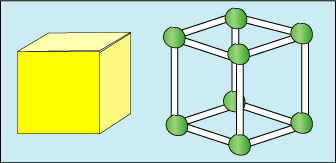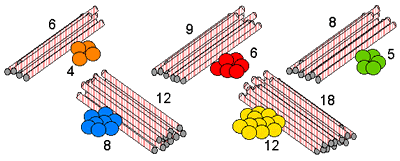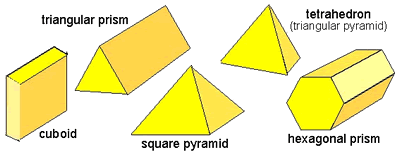Copyright © University of Cambridge. All rights reserved.
'Skeleton Shapes' printed from https://nrich.maths.org/
Show menu
Why do this problem?
This problem helps children begin to become familiar with the various properties of common geometric solid shapes, concentrating on edges and vertices. It also helps in promoting discussion and experimentation. Naming the shapes should be a help during discussion and description of what has been done, rather than being an exercise in its own right.
Possible approach
Before doing this problem children should have had plenty of free play building with sets of solid shapes so that they begin to get a feel for their properties. They should also have chance to experiment with building skeleton shapes either with a specific kit or with drinking straws and modelling clay/plasticine.
Key questions
How many edges did you count? What does this tell you about the number of straws we need?
How many corners did you count? What does this tell you about the number of balls of modelling clay we need?
How many edges meet at this corner?
Possible extension
Possible support
Start by counting the faces on a cube - a large dice might be useful - and then the edges and finally the vertices. A non-permanent pen could be used to mark a real shape if children are having difficulty keeping track of their counting.


